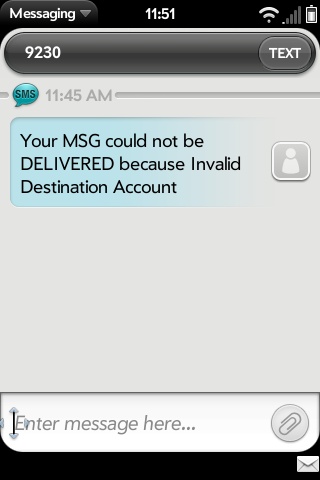Tonight, I was driving down to a person’s house near Moravia, NY to pick up a used kayak. I’d never been there, so I decided to borrow Vicki’s car charger and see how the Pre’s “Sprint Navigation” works on a real test. And because my car has an “Aux in”, I decided to use the Pre to play music at the same time.
If I’d stopped to write this review about 1 mile before I got to my destination, it would have been pretty glowing. On the way down there, I loved the fact that it would fade out the music when it had to give me a direction – I could listen to my music as loud as I wanted and not miss a turn. It took a different route than Google Maps had given me, but it avoided some messing around in downtown Auburn, and I got a nice view of Skaneateles Lake. But it was slightly annoying that it preferred the local road names over the highway number, so while cruising along SR 5/20, it kept telling me “In 1.9 miles, continue along Clark Street Road” and the like as the road changed name every few minutes. On the other hand, the voice prompts were so clear and frequent that I could just go by the sound and not look at the map. On the gripping hand, the phone got uncomfortably hot.
But I was cruising down State Route 38A when it started counting down to a turn. Now, I’m pretty sure it was telling me it was Pine Hill Road, although when I try it now it says Decker Hill Rd. I couldn’t for the life of me see this road when it said to turn, although looking at Google Maps there is a Decker Hill Road around where I was at that time, although I think I might have been at the driveway south of Decker Hill Road. Whatever, I couldn’t see anything I’d want to turn onto, but the GPS stopped showing the road I was on, only the one it thought was there and that I should have turned on. And so the GPS said that it was recalculating. And it said it again. And again. At this point I figured it couldn’t recalculate because of the lack of cell phone coverage down there, so I quickly punched the address into my car’s Garmin Nuvi and it got me to my destination.
On the way home, after I stopped for gas, I decided to try the Pre again, but I was mostly using the Nuvi. When I first fired up the GPS on the Pre, it told me that my ETA was 9:20, but the Nuvi was saying 9:13. As I got closer to home, the Pre kept adjusting my ETA downwards until it eventually agreed with the Nuvi at 9:13, and I got home pretty close to that. I don’t know why the difference – maybe the Pre thinks people drive the speed limit or something crazy like that. Another slight annoyance was that unlike the Nuvi, the Pre’s GPS doesn’t have a “night mode” map with a darker colour scheme to preserve night vision. So I left the screen off 90% of the time. As a side benefit, the phone didn’t get as hot with the screen off.
As I got close to home, I had my second major disappointment of the night. Every GPS in the world (and Google Maps) thinks I should exit from I-590 north of home and come back south, but I prefer to exit to the south and continue north on our neighbourhood streets. And so when I leave I-590, the Nuvi says “Recalculating” once while I’m on the off-ramp as it tries to convince me to take the on-ramp back onto I-590, then “Recalculating” again after I turn onto the road and shows me the neighbourhood route that I normally take. The Pre didn’t handle it quite as well. As I left I-590, it said “Recalculating”, but didn’t actually manage to recalculate a route. It didn’t even show me the street map – all it showed me was a very thin red line pointing in an exact straight line back to the nearest segment of the original route, which for most of the route would have involved smashing through somebody’s house, then their back fence, and then hopping over an embankment onto I-590. And this time I couldn’t even blame poor cell phone coverage, as it was showing a strong signal and EVDO data coverage.
My final verdict on the Pre as a GPS navigator? I’d say about 8/10 when you’re on the proper route, but 0/10 if you accidentally get off the route it originally calculated for you. I suspect based on my experience with other GPSes that it might be better when you get off route to tell it to stop navigating, and then tell it calculate a new route from where you are to your destination. I don’t know why, but I’ve gotten better routes that way from Garmin GPSes than by allowing them to recalculate and it might be the same for the Pre. Or maybe Sprint/TeleNav will just fix the damn software.


